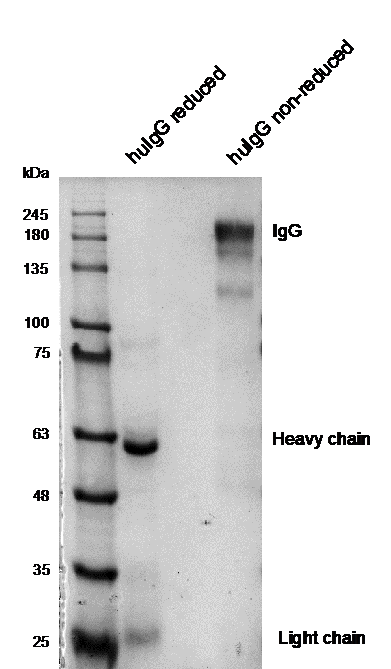
Cat. #153502
Anti-HuD [15A9] (ChIP Grade)
Cat. #: 153502
Unit size: 100 ug
Target: HuD
Class: Monoclonal
Application: ChIP ; ELISA ; IHC ; IP ; WB
Reactivity: Human
Host: Mouse
£300.00
This fee is applicable only for non-profit organisations. If you are a for-profit organisation or a researcher working on commercially-sponsored academic research, you will need to contact our licensing team for a commercial use license.
Contributor
Tool Details
*FOR RESEARCH USE ONLY (for other uses, please contact the licensing team)
- Name: Anti-HuD [15A9] (ChIP Grade)
- Alternate name: ELAV-like protein 4
- Research fields: Developmental biology;Genetics;Neurobiology
- Clone: 15A9
- Class: Monoclonal
- Conjugation: Unconjugated
- Reactivity: Human
- Host: Mouse
- Application: ChIP ; ELISA ; IHC ; IP ; WB
- Description: HuD otherwise known as ELAV-like protein 4 is a protein that in humans is encoded by the ELAVL4 gene. The HuD/ELAVL4 protein is an RNA-binding protein. HuD is expressed only in neurons and it binds to AU-rich element-containing mRNAs. As a result of this interaction the half-life of the transcript is increased. HuD is important in neurons during brain development and plasticity. Monoclonal 15A9 was generated against a unique HuD peptide and does not react with HuR, HuC, or Hel-N1. Monoclonal 15A9 works well in western blot, IHC and provides an excellent marker for neuronal cells. However, it was specifically selected becasue of its abiity to supershift HuD/mRNA ribonucleoprotein complexes. Thus, it is the ideal reagent for CHIP or RIP studies to specifically identify novel HuD targets in neuronal cells.
- Isotype: IgG2b
Target Details
- Target: HuD
- Target background: HuD otherwise known as ELAV-like protein 4 is a protein that in humans is encoded by the ELAVL4 gene. The HuD/ELAVL4 protein is an RNA-binding protein. HuD is expressed only in neurons and it binds to AU-rich element-containing mRNAs. As a result of this interaction the half-life of the transcript is increased. HuD is important in neurons during brain development and plasticity. Monoclonal 15A9 was generated against a unique HuD peptide and does not react with HuR, HuC, or Hel-N1. Monoclonal 15A9 works well in western blot, IHC and provides an excellent marker for neuronal cells. However, it was specifically selected becasue of its abiity to supershift HuD/mRNA ribonucleoprotein complexes. Thus, it is the ideal reagent for CHIP or RIP studies to specifically identify novel HuD targets in neuronal cells.
Applications
- Application: ChIP ; ELISA ; IHC ; IP ; WB
Handling
- Format: Liquid
- Unit size: 100 ug
- Shipping conditions: Shipping at 4° C


